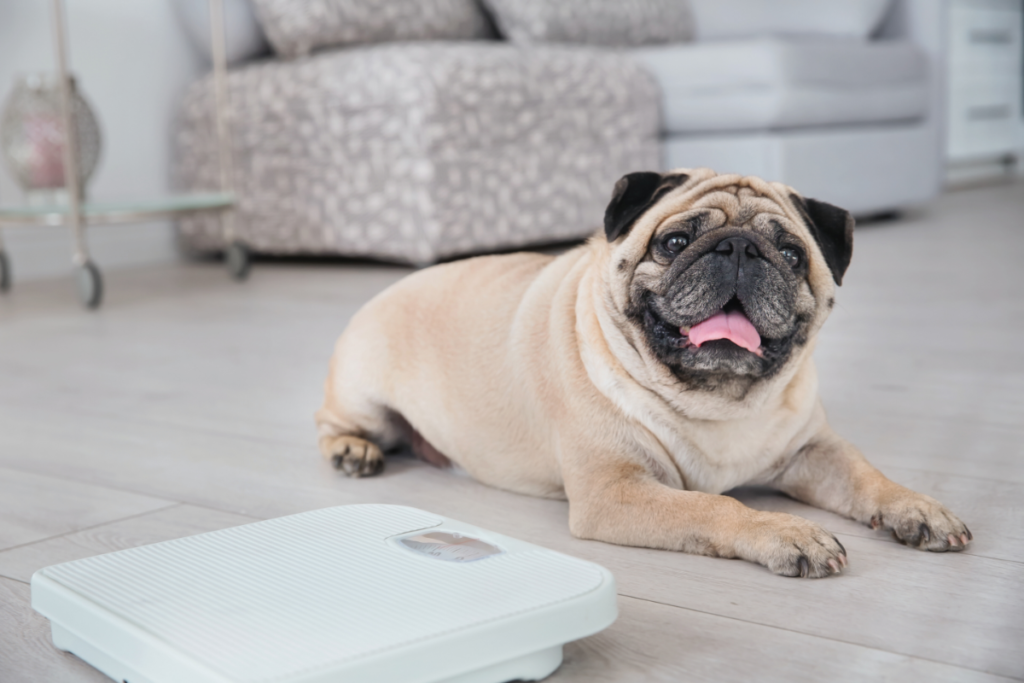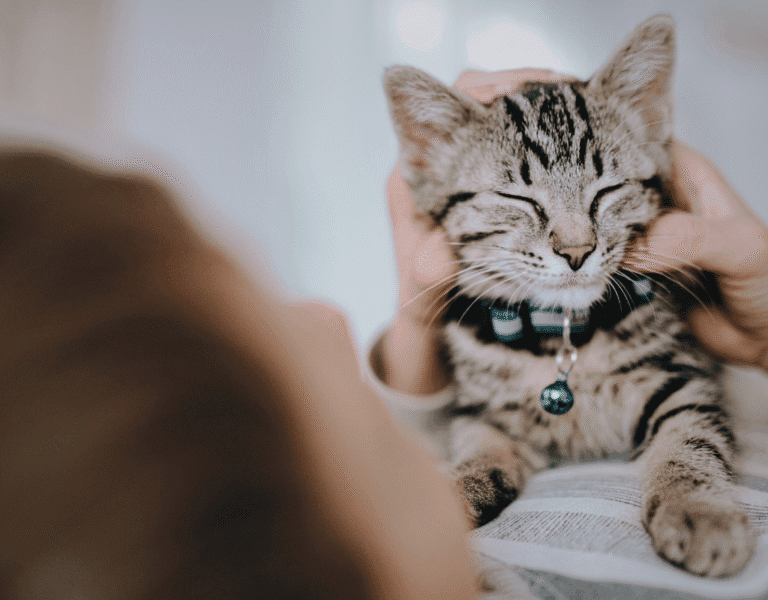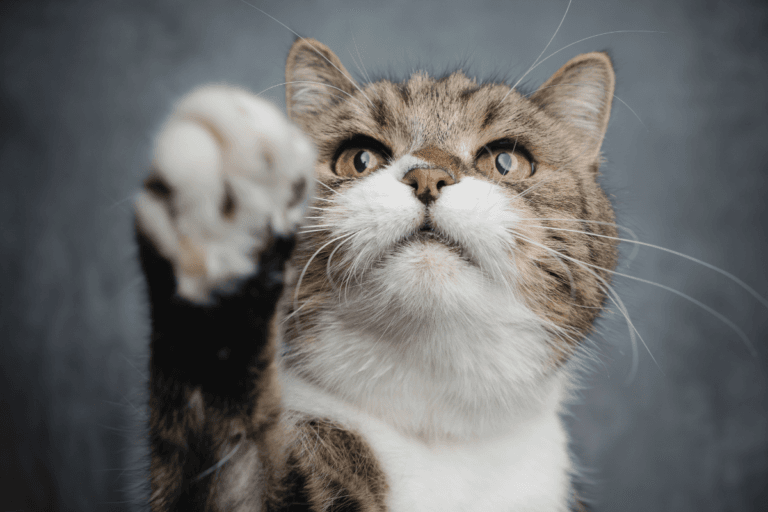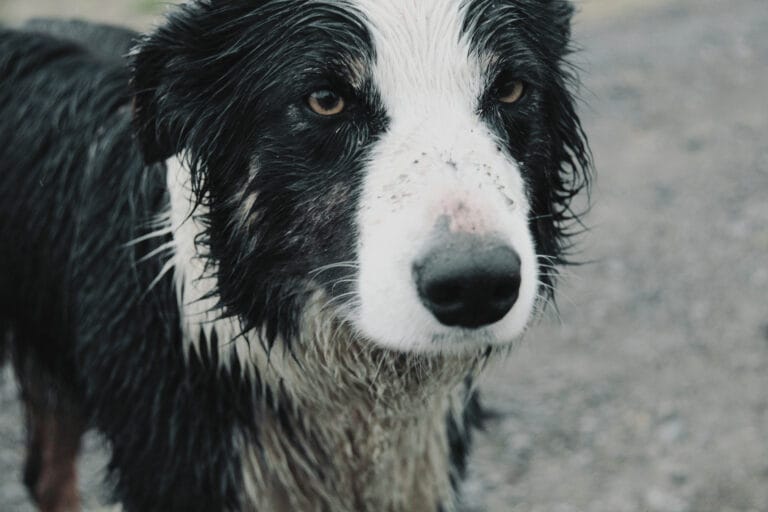

Estimated reading time: 7 minutes
With October being National Pet Obesity Awareness Month, experts are highlighting the serious health risks that overweight dogs and cats face, and to urge owners to take action.
Pet obesity in Australia is increasing, with 41% of dogs and 32% of cats now classified as overweight or obese, according to recent studies.
The statistics are concerning, but it appears many pet owners aren’t aware their dog or cat is overweight and at serious risk.
Addressing obesity is also part of broader animal welfare and pet wellbeing efforts that connect to global awareness campaigns like World Animal Day.
So, how can you tell if your pet is overweight or obese? And how can you help your pet lose weight and get back on track?
Petstock vet Dr Sasha Nefedova shares her expert advice for pet parents to help ensure their animals stay happy, healthy, and active.
Pet obesity in Australia: know the signs
The stats paint a concerning picture: more than 90% of Australians with overweight pets don’t even realise it.
And as pet obesity can cause serious and life-threatening health conditions, Petstock vet Dr Sasha says it’s time pet owners start paying attention.
“Weight isn’t just about appearance,” Dr Sasha says.
“Overweight pets are more likely to develop chronic diseases like diabetes and heart problems, which can significantly shorten their lifespan.”
Obesity in pets isn’t just about a few extra treats here and there. It’s defined as an excessive accumulation of body fat that can lead to serious health problems.
But what does that look like on your average dog or cat?
“There’s no magic number when it comes to determining if your pet is overweight,” Dr Sasha explains.
“It’s more about their body condition and fat percentage.
“Pets are generally considered overweight when their body fat exceeds 26% of their ideal weight, and obese when it’s over 36%.”
“When checking their ribs and spine, I like to compare it to feeling the knuckles of your hand,” adds Dr Sasha.
“If they’re too thin, it feels like the knuckles when your hand is clenched in a fist.
“Too much fat feels like the knuckles on the palm side of your hand.
“The ideal is when the knuckles feel like they do with your hand relaxed on a flat surface.”
4 signs your pet might be overweight
Feel for the ribs: If you can’t feel your pet’s ribs easily without pressing hard, it’s a red flag.
Look for a waistline: From above, a healthy dog or cat should have a visible waist that curves inward behind the ribs.
Check for a tummy tuck: When viewed from the side, your pet’s abdomen should slope upwards, not sag.
Watch for behaviour changes: Reluctance to move, difficulty jumping or climbing stairs, and signs of joint pain can all indicate your pet is carrying too much weight.
What’s causing the rise in overweight dogs and cats
Recent studies show that 41% of dogs and 32% of cats are now classified as overweight or obese.
One major factor? Many pet owners don’t realise their feeding habits are part of the problem.
“Overfeeding and calorie-rich treats are big culprits,” says Dr Sasha.
“We love spoiling our pets, but treats should be given sparingly.
“For example, one French fry to a small dog is like a whole burger for us.
“That’s a lot of extra calories they don’t need.”
Another issue is a lack of exercise. While dogs might get their daily walk, it’s often not enough.
Cats, on the other hand, are commonly overlooked when it comes to physical activity.
But Dr Sasha stresses that both dogs and cats need regular exercise or activities to stay fit.
How to help your pet stay at a healthy, optimal weight


According to Dr Sasha, it’s a three-pronged approach for success: balanced nutrition, regular exercise, and routine check-ups.
1. Balanced diet
“Start by feeding your pet the right portions for their breed, size, and activity level,” Dr Sasha advises.
“A good rule of thumb is 80% high-quality dry food and 20% wet food or fresh treats like vegetables and lean meat.”
She says all owners should ensure they follow these three pet diet tips.
✔️Avoid human food – high in fat and often contains harmful ingredients like artificial sweeteners.
✔️Stop free-feeding – Leaving food out all day encourages overeating. Serve meals at set times and remove uneaten food after an hour.
✔️Use treats sparingly – They’re better for training than everyday snacking.
2. Regular exercise or activities for all pets
Exercise is just as important for pets as it is for humans.
For dogs, daily walks are essential, but variety is key. Activities like fetch, swimming, or agility games can keep them engaged and active.
For cats, indoor play is a great way to burn off energy.
“Interactive toys, feather wands, or even a cardboard box can get your cat moving,” Dr Sasha says.
“Try puzzle feeders too—they keep pets mentally stimulated while controlling portion sizes.”
3. Routine vet visits
Finally, Dr Sasha says your vet is your best ally in managing your pet’s weight.
“We can help with personalised diet plans and monitoring your pet’s progress over time,” she says.
“It’s not just about hitting a target weight—it’s about maintaining it long-term.”
…and finally, why pet fat shaming is NOT the answer
Dr Sasha stresses that helping the pet obesity problem shouldn’t involve fat-shaming or blaming the pet owners.
Instead, her guidance is a positive approach to encourage pet owners to think of healthy changes as a chance to bond with their animals.
“It isn’t about blame but creating better habits,” she says.
“When pets feel better, they’re more energetic and playful. It’s a win-win for everyone.”
And shouldn’t that be what every pet owner wants for their beloved companion?
➔ Learn more about Dr Sasha and the Petstock veterinary team !
Related posts
Animals and spirituality: 6 advocacy rituals for the October New Moon
Discover how to weave animal healing into your spiritual practices – ahead of the October New Moon, this post shares tips and soulful advocacy rituals to help combine your spiritual growth with compassion for all beings — creating ripples of healing, awareness, and kindness.
How to keep your cat healthy, and happy, in winter: 5 expert tips
Dr Claire Jenkins from Breeder’s Choice shares her top 5 tips for keeping cats healthy and happy during the cold winter months
National Cat Health Month: How to keep your feline friend healthy
As February marks National Cat Health Month, it’s the perfect time for cat owners to reflect on how they can…
St. Francis of Assisi: Patron saint of animals; a legacy of compassion
Every year on October 4, millions of people around the world celebrate World Animal Day — a date chosen because…
Peppa Pig’s Fun Day Out LIVE! Australian tour – win a family pass!
Peppa Pig is heading back to Australia in next month for a brand-new live stage show, Peppa Pig’s Fun Day Out…
Animals and spirituality: 6 advocacy rituals for the October New Moon
Discover how to weave animal healing into your spiritual practices – ahead of the October New Moon, this post shares tips and soulful advocacy rituals to help combine your spiritual growth with compassion for all beings — creating ripples of healing, awareness, and kindness.
St. Francis of Assisi: Patron saint of animals; a legacy of compassion
Every year on October 4, millions of people around the world celebrate World Animal Day — a date chosen because…
How to keep your cat healthy, and happy, in winter: 5 expert tips
Dr Claire Jenkins from Breeder’s Choice shares her top 5 tips for keeping cats healthy and happy during the cold winter months
Animals and storms: how to help your anxious pet
With the torrential rain continuing across Sydney and parts of New South Wales, we’ve compiled an animal safety guide for…
Peppa Pig’s Fun Day Out LIVE! Australian tour – win a family pass!
Peppa Pig is heading back to Australia in next month for a brand-new live stage show, Peppa Pig’s Fun Day Out…
Meet the dogs offering emotional support in courtrooms
Updated 13 July 2025 Three new court dogs have been officially “sworn in” to the National Court Dog Program, an…
1. Balanced Diet
“Start by feeding your pet the right portions for their breed, size, and activity level,” Dr Sasha advises.
“A good rule of thumb is 80% high-quality dry food and 20% wet food or fresh treats like vegetables and lean meat.”
Dr Sasha says pet owners should stick to these tips when it comes to their pets diet:
- Avoid human food – high in fat and often contains harmful ingredients like artificial sweeteners.
- Stop free-feeding – Leaving food out all day encourages overeating. Serve meals at set times and remove uneaten food after an hour.
- Use treats sparingly – They’re better for training than everyday snacking.
2. All pets need regular exercise
Exercise is just as important for pets as it is for humans.
For dogs, daily walks are essential, but variety is key. Activities like fetch, swimming, or agility games can keep them engaged and active.
For cats, indoor play is a great way to burn off energy.
“Interactive toys, feather wands, or even a cardboard box can get your cat moving,” Dr Sasha says.
“Try puzzle feeders too—they keep pets mentally stimulated while controlling portion sizes.”
3. Make routine vet visits a priority
Finally, Dr Sasha says your vet is your best ally in managing your pet’s weight.
“We can help with personalised diet plans and monitoring your pet’s progress over time,” she says.
“It’s not just about hitting a target weight—it’s about maintaining it long-term.”
Why fat-shaming pet owners doesn’t work
Dr Sasha stresses that helping the pet obesity problem shouldn’t involve fat-shaming or blaming the pet owners.
Instead, her guidance is a positive approach to encourage pet owners to think of healthy changes as a chance to bond with their animals.
“It isn’t about blame but creating better habits,” she says.
“When pets feel better, they’re more energetic and playful. It’s a win-win for everyone.”
And shouldn’t that be what every pet owner wants for their beloved companion?







